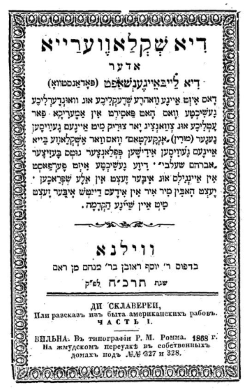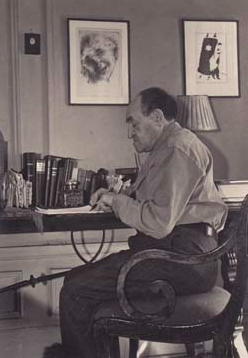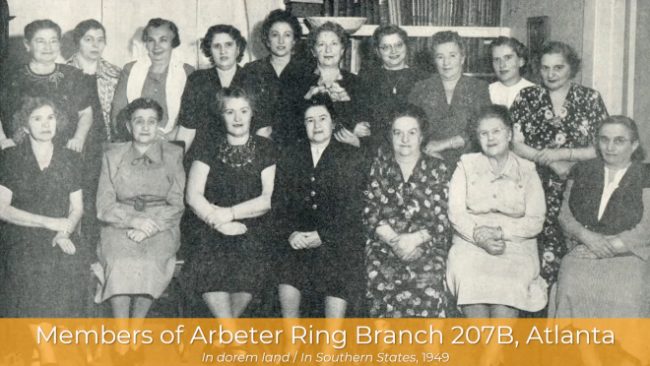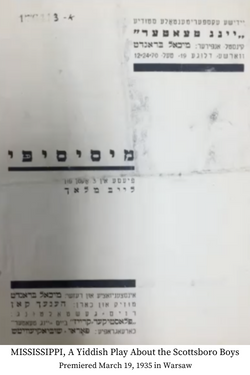The Weekly Reader: Yiddish writers' efforts to address racial oppression
When Yiddish-speaking Jews immigrated en masse to the United States in the late nineteenth and early twentieth centuries, they came with their own histories of pogroms and persecution. Even in America, the goldene medine, they had to deal with popular and institutional antisemitism. But they also confronted a country with its own history of racism. Slavery and the Civil War were not that far in the past, and bigotry against Black Americans was widely acceptable, even in otherwise progressive circles. Many Yiddish writers viewed this new racial landscape and tried to come to terms with it. Today those efforts can seem uncomfortably dated, displaying the prevailing attitudes of their times. But they can also be insightful and inspiring, reflecting those writers’ efforts to address racial oppression and injustice. In honor of Black History Month, we’re highlighting a few items from our collections that speak to the efforts of Yiddish-speaking Jews to come to grips with the lives and struggles of their African American compatriots.
—Ezra Glinter
Uncle Tom's Cabin

Harriet Beecher Stowe’s Uncle Tom’s Cabin was not only an American classic and a best seller (second in nineteenth-century America only to the Bible), but it is also credited with inspiring the abolitionist movement and even laying the groundwork for the Civil War. It was also popular internationally, with translations appearing in some twenty languages within five years of publication. For Eastern European Jewish readers, it was the first American novel to be translated into Yiddish, coming out in Vilna in 1868 with a translation by the early Yiddish writer Ayzik Meyer Dik. The novel was again translated in 1911 by J. Jaffa under the rather Americanized title Onkel tom’s kebin.
Read Ayzik Meyer Dik’s Yiddish translation of Uncle Tom’s Cabin
In the Press

How did Yiddish journalists and intellectuals respond to the persistent discrimination and violence against African Americans in the United States in the late nineteenth and early twentieth centuries? How did they understand the problem? In this talk, historian Tony Michels addresses these questions in order to gain a historical perspective on the Jewish encounter with race and racism in the United States.
Listen to a talk by Tony Michels about the Yiddish press and racism in America
A Lynching

When Joseph Opatoshu published the short story “Lintsheray” in 1922, he had been living in the United States for fewer than five years. The next year the story appeared in his collection Rase, lintsheray, un andere dertseylungen (Race, Lynching, and Other Stories). Both publications were in Warsaw, but they were all about America and its history of racial violence. Although the story is far from perfect, perpetuating negative stereotypes about Black Americans and idealizing the American justice system, it was an earnest and evocative attempt to come to grips with the ugly realities of racial oppression in Opatoshu’s new home.
Watch an oral history interview with Joseph Opatoshu’s grandson, Dan Opatoshu
Read Opatoshu’s collection in the Steven Spielberg Digital Yiddish Library
Secular Yidishkayt in the South

Among the minority of Jewish immigrants who ventured to the American South in the early twentieth century, a small number dedicated themselves to radical politics and secular Yiddish culture. By 1908 they had begun organizing in southern cities, establishing literary and dramatic groups, lending libraries, and chapters of the Arbeter Ring (Workers Circle). This talk by Dr. Josh Parshall examines how southern members of Jewish-left groups grappled with issues of justice in a region characterized by stark racial divides and staggering class disparities. The presentation also includes new musical adaptations, performed by Jordan Wax, of songs drawn from historical source materials.
A Time of Reckoning

The confrontation between Yiddish and racial justice is not just a thing of the past. In 2020, as the United States was again confronting its long history and present reality of racial violence, a panel of translators and scholars sat down at the Yiddish Book Center to ask what the Yiddish writing of previous generations reveals to us about our own moment.
Listen to a panel discussion about Yiddish literature in a time of national reckoning
